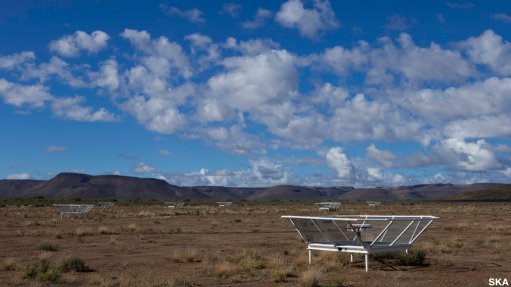
The memorandum of understanding (MoU) for institutionalising cooperation in radio astronomy between South Africa and the other Square Kilometre Array (SKA) African partner countries was approved on Friday at the third SKA African Partner Countries Ministerial Meeting. The MoU was signed by the three Ministers attending the meeting.
These were South African Science and Technology Minister Naledi Pandor, Botswanan Infrastructure, Science and Technology Minister Nonofo Molefhi and Mauritian Education and Human Resources, Tertiary Education and Scientific Research Minister Leela Devi Dookun-Luchoomun. The MoU will be signed by the other Ministers in their respective countries in due course.
The SKA is an international programme to create the world's biggest radio telescope array. The core sites for the SKA will be in South Africa and Australia. During Phase 2 of the programme, outstations will be set up in a number of other countries. The SKA African partner countries will each host at least one outstation. These countries are Botswana, Ghana, Kenya, Madagascar, Mauritius, Mozambique, Namibia and Zambia.
South Africa and the eight SKA African partner countries are also partners in the African Very Long Baseline Interferometry (AVN), being developed with South African expertise. This involves the conversion of obsolete large telecommunications dishes into radio astronomy antennas and is also covered by the MoU.
In response to a question from Engineering News Online, SKA South Africa (the local organisation responsible for South Africa's participation in the SKA and AVN, as well as for the development of the local SKA precursor instrument, the MeerKAT radio telescope array) calculated that, from 2005 until the end of last month, South Africa had invested some R2.4-billion in the SKA and MeerKAT programmes, including the KAT-7 prototype array of seven dishes.